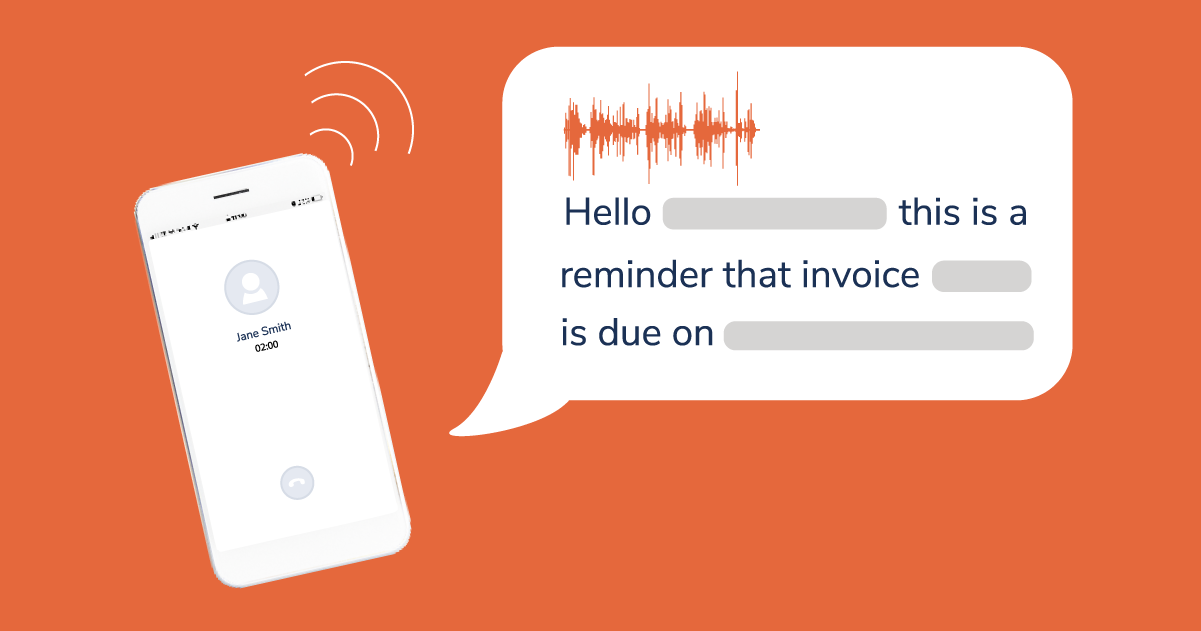No one likes chasing invoices. It's a necessary but often tedious task, requiring time and effort on an already-busy schedule. But if you are not getting paid for your work, it's something that needs to be done.
So how do you improve the process?
This blog aims to give Microsoft Dynamics 365 Business Central users advice on how to optimize accounts receivables (or credit control) process so they can get Business Central invoices paid quicker and reduce costs and headaches in the future.
The late payment problem
Companies in the United States are facing a late payment epidemic. The problem is only getting worse, with businesses waiting longer and longer to get paid for the goods and services they provide.
While the average payment window for small businesses in the U.S is 30-day, research shows that SMBs (small and mid-sized businesses are regularly waiting as much as 50 days to get paid.
The reality is that most of the time, companies have no reason to pay their invoices late. Research by Sage shows that the most common reason given for delaying payments is that the transaction is pending or there was no reason given at all (34%).
Research also shows that the situation is getting worse, with a 72% year-over-year increase in invoice payment defaults compared to 2019.
So what can you and your business do to overcome these issues?
Make sure you invoice on time, every time
If you want to get paid on time, you have to invoice on time. If you don't invoice on time, you should expect to wait longer for payment.
So it's important to know when your customer expects the invoice and make sure that you send them one at this stage - or even before if possible.
Ideally, as soon as you've pulled the trigger on sending over the goods, or completing delivery of the services that your customer needs, you should send an invoice too.
The more time you give your customers to pay the invoice, the better they are likely to be at actually paying it on time and that means less chasing for you.
Set your payment expectation in your terms and conditions
Don't just expect customers to be aware of and respect your terms and conditions. Let them know the terms upfront so there are no misunderstandings later.
During the onboarding process, make sure you make your payment terms clear to your customers and have them agree on them as part of the process. You should also take this opportunity to credit check your customers. Credit checking is an important part of protecting yourself against bad debt and is an easy process to complete.
If you don’t already have an accounts receivables policy in place, try this accounts receivables and debt collection policy template to get started.
To ensure you are extending the correct amount of credit to customers, consider setting strict credit limits so you don’t put your business at risk of poor cash flow by lending too much credit to businesses who present late payment risks.
Additionally, don't be afraid to negotiate on your payment conditions if it makes sense for both parties! This is business after all - you may have to make some concessions here or there in order to reach an agreement that works for everyone involved.
Make sure your invoices are clear and concise
When you are sending out invoices, make sure they're clear and concise.
First, try to minimize the amount of information on the invoice - if possible only include what is absolutely necessary for your customers.
You can also add a glossary of key terms section at the bottom of each page so that there are no misunderstandings between you and your customer regarding commonly used phrases in business transactions.
Make sure that the contact details on your invoices are correct and up-to-date. This may seem like an obvious one, but it's easy to make a mistake.
Invoices that go out with incorrect or outdated contact information can often get delayed when trying to be chased up.
Secondly, be mindful about how you lay them out! Try splitting it up into four parts: description/properties (what was sold), price category (how much), quantity (how many), and your payment details.
If appropriate, consider including pictures that illustrate exactly what was sold too so this process becomes even easier for your clientele. This will prevent any possible confusion and make for a smooth invoice payment process.
Request a deposit
Requesting that your customers make an upfront payment or deposit can help to ensure that you get some money in the door straight away.
This will also show your customers that you're serious about getting paid and can give you a bit of breathing room if they do end up taking a little longer to pay off the invoice in full.
While it might seem like asking for a deposit might put off potential customers, it's worth remembering that using a deposit system can actually help to increase business transactions and is fairly common.
Asking your customers for early payment and offering them some kind of discount could be another idea worth considering if they are really struggling to pay the invoice on time.
This will show that you value their business and want things done sooner rather than later so offering either a small percentage off or bringing down the total price might encourage faster payments.
Make use of automation to streamline your accounts receivables
Automated accounts receivables platforms like Chaser are able to automate the process of sending invoices, reminders, chasing up overdue payments, and tracking debtors.
With Chaser you can automatically send out reminders so you don't have to worry about manually chasing your customers every month.
Chaser also integrates with Microsoft Dynamics 365 Business Central. That's right - no more double-entry bookkeeping!
By using an automated accounts receivables platform like Chaser, you'll be able to save time on manual tasks that are not part of your core business activities or revenue-generating processes.
Automated account receivables management saves businesses money in staff costs because there will be fewer entry errors caused by data duplication between different software systems.
The Chaser and Dynamics 365 Business Central integration will also sync invoices, payments, customers, and other data between the two platforms - so you'll always have an up-to-date view of your accounts receivable situation.
Offer more payment methods
The more payment methods you offer, the more chances your customer has to make a payment.
You might want to consider offering online payment methods, such as PayPal or Stripe.
Chaser's Payment Portal will allow you to set up payment pages for these third-party online payment services, and automatically create a new invoice in Dynamics 365 Business Central when the customer makes a purchase.
Also consider offering flexible payment plans to reduce late payments and get invoices paid quicker, such as a small initial deposit followed by monthly installments.
Chaser's flexible payment plans feature lets you create purchase orders in Dynamics 365 Business Central when the customer makes an early payment; and it supports automatic invoicing for later payments, too.
Always follow up on any late payments
As soon as a payment becomes overdue, it's important to send a friendly reminder.
When the customer receives this follow-up email, they should be reminded of your invoice and given a final chance to pay in full or make other arrangements for payment before further action is taken.
In some cases, you may need to take more drastic measures such as sending debt collection agencies after customers who fail to settle their overdue invoices - even if these are only small amounts.
Some customers may have genuine reasons for being slow to pay, so it's always a good idea to follow up on all payment reminders. Don’t be afraid to follow up on an email with a phone call.
If the customer can't afford to make a cheque or card payment, you should consider accepting alternative forms of payment such as bank transfers and invoicing later when funds are available. Polite persistence is always a better solution to getting your unpaid invoices made good than simply writing them off as bad debt.
Put late fees in place
As an alternative way of trying to secure payment from a debtor, you might also consider setting up a credit agreement with the customer in question adding late fees for missed deadlines.
Late fees and interest on overdue payments can be a useful way of getting your money back without having to resort to legal proceedings. Depending on which country you are in, the ability to leverage interest rates on overdue payments may be restricted, so it is important to check the law before you take this approach.
It's also possible for businesses and individuals to put in place a credit agreement with their debtor adding late fees and interest rates for missed deadlines if they're not paid within 30 days (this varies according to country).
Use a cloud-based accounting system
Microsoft Dynamics 365 Business Central offers a huge range of benefits that can help to streamline your accounts receivables process - but it's important to make sure that you have the right software in place.
A cloud-based accounting system, like Microsoft Dynamics 365 Business Central, can provide your business with a number of advantages over an on-premises solution:
- You'll have access to the latest features and updates as soon as they're released - no need for costly upgrades or time-consuming installations.
- Your data will be securely hosted in the cloud, so you'll never have to worry about losing critical information if something goes wrong with your server.
- You'll be able to access your accounts from anywhere in the world, 24/7, making it easy to keep track of your finances whether you're at home or on the go.
But one of the biggest advantages of moving to the cloud is the flexibility it gives your business. With a cloud-based accounting system, you can quickly and easily get invoices paid quicker by taking advantage of features like automatic payment reminders and invoice due dates.
Always be polite
Try to always be polite and professional in your communications, but make it clear that you would appreciate payment as soon as possible. Chasing late invoices that might be critical to the survival of your business is never easy, but it is essential that you don't allow yourself to get angry or threatening with your customers.
Not only will this put your customer on the back foot and make them defensive, making it harder to resolve the situation, it will also damage your chances of getting repeat business.
Combine the power of Chaser and Microsoft Dynamics 365 Business Central
If you want to optimize and automate the tips above, the first step is to integrate Microsoft Dynamics 365 Business Central and Chaser.
Find out more about the benefits of integrating Chaser and Microsoft Dynamics 365 Business Central or use Chaser integrated with Microsoft Dynamics for free, for 14-days by starting your free trial today.




